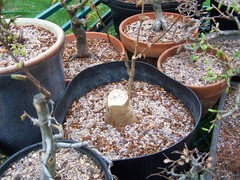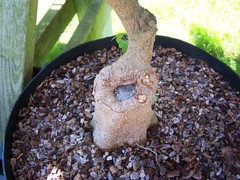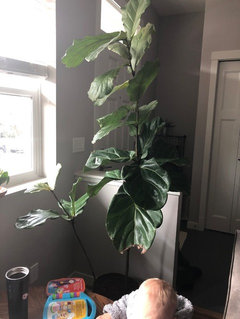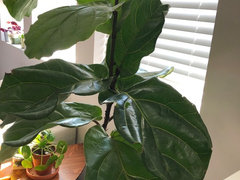How do i rebalance a lopsided fiddle leaf fig?
HU-948828018
5 years ago
Featured Answer
Sort by:Oldest
Comments (11)
HU-948828018
5 years agoRelated Professionals
Kenmore Landscape Architects & Landscape Designers · North New Hyde Park Landscape Architects & Landscape Designers · Oconomowoc Landscape Architects & Landscape Designers · Alamo Landscape Contractors · Centereach Landscape Contractors · San Bruno Landscape Contractors · Spring Landscape Contractors · Thonotosassa Landscape Contractors · South Elgin Landscape Architects & Landscape Designers · Lakeland Landscape Contractors · Brandon Landscape Contractors · Fort Mill Landscape Contractors · Saint John Landscape Contractors · Soddy Daisy Landscape Contractors · Tehachapi Landscape ContractorsHU-948828018
5 years agoAli Burgess
5 years agotapla (mid-Michigan, USDA z5b-6a)
5 years agoAli Burgess
5 years agotapla (mid-Michigan, USDA z5b-6a)
5 years agoAli Burgess
5 years agoAli Burgess
5 years agotapla (mid-Michigan, USDA z5b-6a)
5 years ago
Related Stories

HOUSEPLANTSPlay Up Some Fiddleleaf Figs for a Lively Indoor Tune
Strike a dramatic chord in a minimalist scene or a country note in a rustic setting — fiddleleaf fig plants harmonize with any style
Full Story
HOUSEPLANTSSee How Fiddleleaf Fig Trees Can Liven Up Your Decor
The tropical houseplant with big green leaves adds a cheerful and striking design element to rooms
Full Story
CONTAINER GARDENSConsider These 10 Pet-Safe Houseplants
Help keep cats and dogs healthy with the right selection of indoor plants
Full Story
DECORATING GUIDES12 Smart Ideas for Decorating Empty Corners
Fill a neglected corner with something useful, attractive or both, using these dozen thoughtful decorating strategies
Full Story
DECORATING GUIDESDitch the Rules but Keep Some Tools
Be fearless, but follow some basic decorating strategies to achieve the best results
Full Story
PRODUCT PICKSGuest Picks: Decorating Solutions for the Stylish Renter
Look to removable wallpaper, appliance covers and easily changed hardware for the answers to decorating woes in a rental
Full Story
DECORATING GUIDESFrom Queasy Colors to Killer Tables: Your Worst Decorating Mistakes
Houzzers spill the beans about buying blunders, painting problems and DIY disasters
Full Story
MY HOUZZMy Houzz: Japanese Minimalism Blends With Classic New Orleans Style
African art and indoor plants complement the clean and modern aesthetic of two landscape architects
Full Story
MOST POPULARHouzz Tour: Easygoing and Elegant in White, Cream and Gray
The renovation of an 1860s Massachusetts home creates a sophisticated, serene and comfortable living space
Full Story
PRODUCT PICKSGuest Picks: New Traditionalists
Traditional furniture, accessories and more get a fresh outlook with the injection of a few unexpected elements
Full Story














tapla (mid-Michigan, USDA z5b-6a)